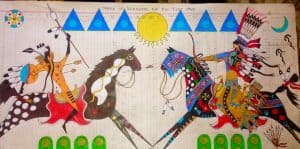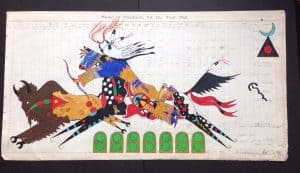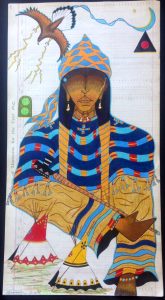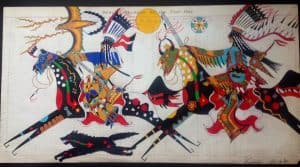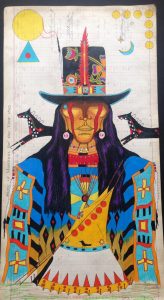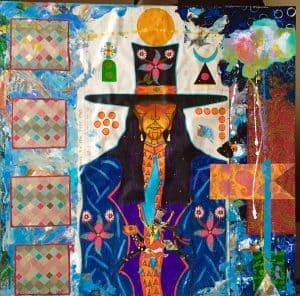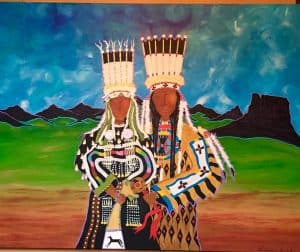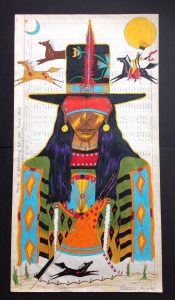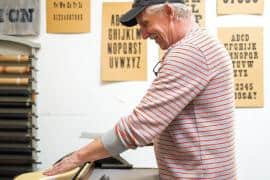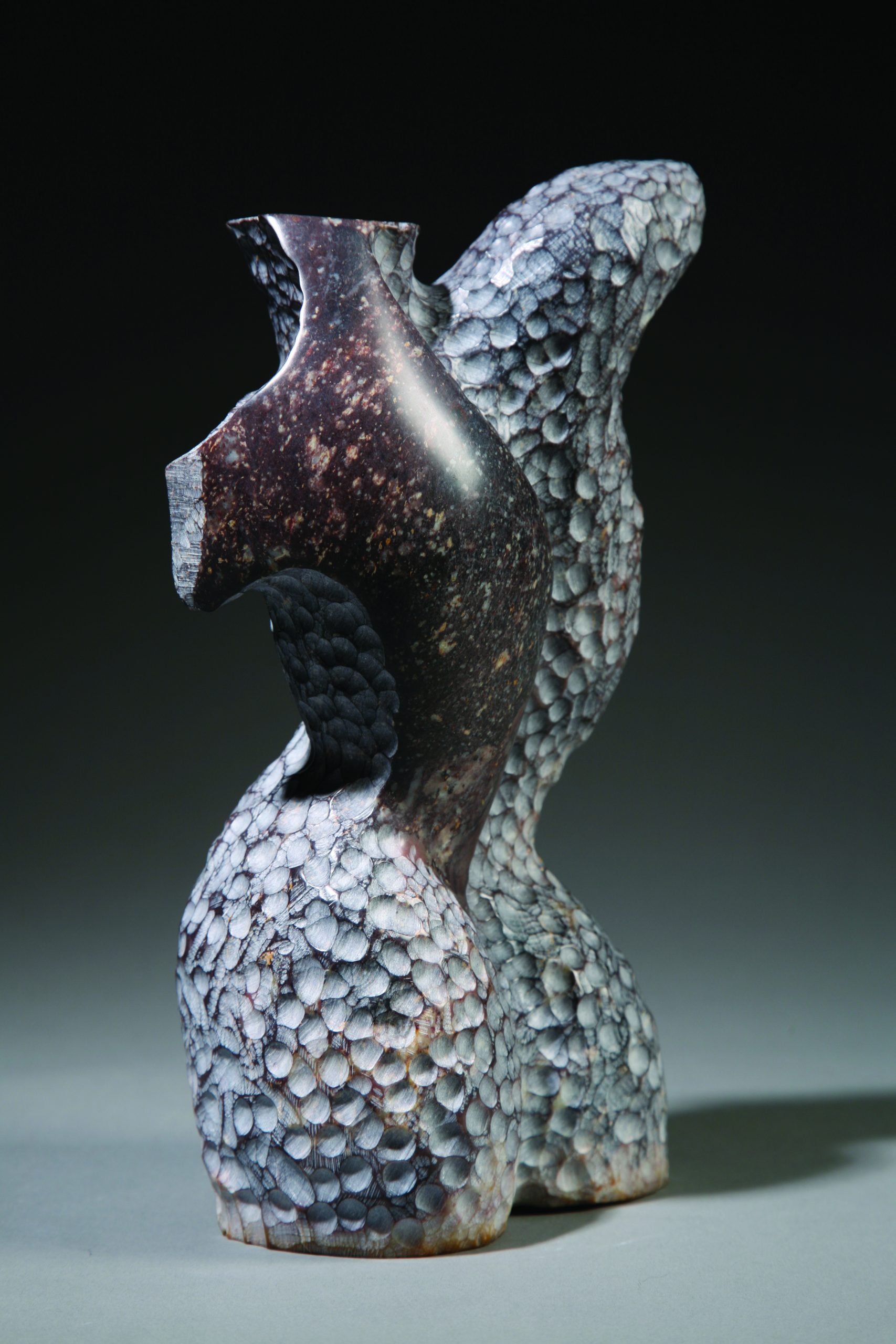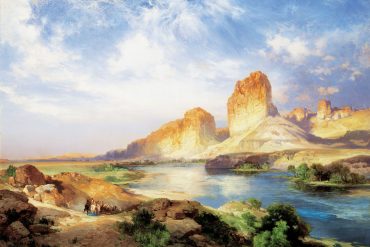Artist Keeps Blackfoot Tradition Alive
written by Charyn Pfeuffer | photos by David Wentworth
Every person has a story to tell. The tradition of storytelling among the Blackfeet, an American Indian tribe in Montana, still survives. Prior to having a written language, Blackfeet preserved their heritage pictorially with visions and experiences painted on tipis, shields, pictographs and buffalo hides.
Artist Terrance Guardipee, a Seattle painter and ledger artist who grew up on the Blackfeet Reservation in Browning, Montana, honors his heritage and ancient traditions through a creative style of visual storytelling called ledger art.
The genre stems from the accounting ledger books that were a common source of paper for Plains Indians during the late nineteenth century. It was co-opted as a means of historical storytelling for the people of the Great Plains from roughly 1850 to 1910, and then hid in the shadows for several decades. Guardipee was one of the first Native artists to revive the historical tradition.
Although he’s widely lauded for his time-honored depiction of Blackfeet legacy, he transformed the customary single-page style to his signature map-collage concept. “I knew about the process of making ledger art, but wanted to expand upon it and make it mine,” said Guardipee, who started creating ledger art more than 15 years ago. Painting bold colors on antique documents such as maps, checks, receipts and war rations, Guardipee uses a layered collage technique to interpret his personal experiences with Blackfeet culture. Many of his papers date back to the mid-nineteenth century and come from the Blackfeet homeland of Montana. He describes his work as a contemporary expression of ledger art based on real people, mostly family and tribal members. His beautifully intricate pieces incorporate ancient symbols used by the Blackfeet tribe for thousands of years.
Different symbols hold significant meaning. A pyramid shape, for example, may represent mountains, while a tombstone shape signifies rolling hills. “My art is primarily based on creation and tribal war stories,” said Guardipee. “Forty to fifty percent of my work features female warrior figures.”
His work also prominently features horse riders, holy men, love and the railway. Guardipee’s grandfather worked on the train at Glacier National Park, and the significance of the Great Northern Route is evident throughout his collages. When the artist finished studies at the Institute of American Indian Arts in Santa Fe, New Mexico and first traveled to Seattle, he rode the train.
Each of Guardipee’s pieces—he doesn’t reproduce prints—comes with a complete description of what its symbolism means. His work can be found in private collections, as well as prominent museums and Indian art markets. In an increasingly globalized world, it’s work like Guardipee’s that helps keep the age-old tradition of storytelling alive.
“In my ledger art, I hope to represent the old form while bringing snippets of my ancestor’s war history to life,” said Guardipee. “I hope to keep the spirit of the Blackfeet alive.”
From our partners at Ontrak magazine



